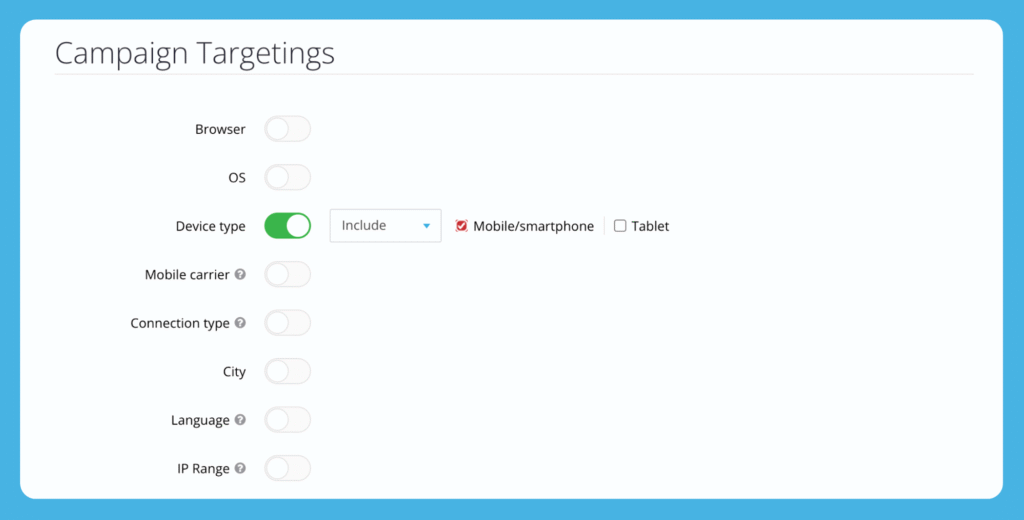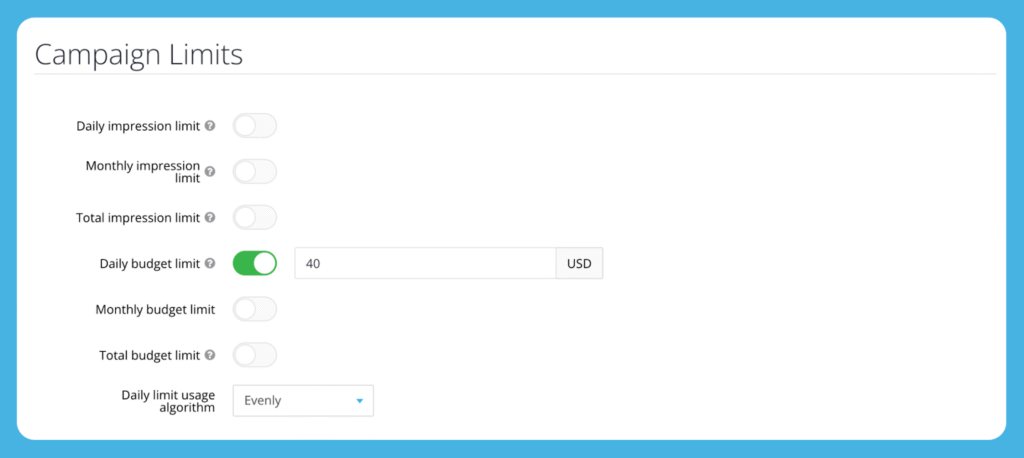Over 588,246 impressions in just one week. That’s what our advertiser achieved with their sports betting offer using HilltopAds’ CPA Goal feature. Sports betting is tough. Competition is fierce. The Philippines? Even tougher. In this case study, we’ll show you exactly how targeting, creatives, and smart optimization turned a challenging campaign into a success. Step by step, you’ll see what worked — and why.
Key Points
Offer: Betting
GEO: PH
Traffic: Non-Mainstream/Mainstream
Ad Format: Popunder mobile
Ad campaign period: 7 July – 13 July (7 days)
ROI: 40%

Start using CPA Goal in your advertising campaigns
and you might achieve even more impressive results.
About the Betting Industry in 2025
Sport and wagering go hand in hand: fans use their knowledge and emotions to make predictions, and affiliate marketing provides a way to monetise that audience without getting involved in the platform’s operational side. In essence, sports affiliate marketing is simple — you promote bookmaker platforms to your audience and earn commissions for registrations, deposits or other target actions (CPA, RevShare or hybrid models). You don’t handle payments, customer support or platform maintenance — your job is just to connect fans with a service they trust.
Football has traditionally been the leader by betting volume: its vast international fan base, busy calendar of domestic and international fixtures, and the wide variety of markets (match results, totals, in-play bets) make it the most wagered sport both online and offline. At the same time, betting on cricket is forecast to grow rapidly between 2025 and 2030 — especially in markets such as India, Pakistan, Bangladesh and parts of Africa — where rising smartphone penetration is quickly driving up betting activity. The rise of live betting, streaming and real-time data has made event-driven and in-play products especially appealing, giving affiliates extra tactical levers: event creatives, match-level targeting and data-driven ad strategies.
The affiliate model remains one of the most cost-effective ways for operators to acquire players: it reduces risk and enables scaling across multiple channels (pop/push, native, programmatic, social media, etc.), while giving affiliates flexibility to test creatives and prelanders. It’s important to note that markets and approaches vary by GEO — Southeast and South Asia, the CIS and parts of Africa often show higher traffic costs and distinct user behaviours — and that regulatory and responsible-gaming considerations matter. Honest value propositions (for example, a clearly described first-deposit bonus) and transparent messaging usually yield higher-quality registrations and deposits than clickbait.
With that context in mind, let’s zoom in on the region this case focuses on. Our partner ran the campaign targeting the Philippines.
What makes Sports Betting in the Philippines different?
Rapid Growth Across Asia-Pacific
The sports betting market in the Asia-Pacific region is expanding fast. Increasing internet access and widespread smartphone use make online platforms more accessible than ever. Cricket, football, basketball, and esports are the most popular sports for betting, creating a diverse and dynamic market across the region.
The best-performing sports really depend on geography. In India and Pakistan cricket rules the roost; across much of Europe, football is king. In other markets, basketball or esports can outperform traditional verticals. But more than the sport itself, it’s the scale of the event that matters — a major fixture or tournament will almost always drive higher engagement and better conversions than a generic campaign.
Why the Philippines Stand Out
Among these markets, the Philippines stand out due to a unique mix of cultural attitudes, market behavior, and regulatory frameworks. This combination gives the Philippines a distinctive position compared to neighboring countries, allowing the betting industry to expand rapidly despite regional challenges.
The most promising geos right now are those with fast-growing mobile internet adoption and large, engaged audiences — notably Southeast Asia and South Asia, as well as parts of the CIS and Africa. These regions often combine rising smartphone penetration, strong passion for sport and less-saturated ad ecosystems, which makes CPAs more attractive and scaling easier. Of course, each market brings its own regulatory and payment quirks, so success still depends on localized creatives, tailored payment options and a compliance-first approach.
Comparing Other Asian Markets
Conditions vary widely across Asia. In Singapore and Hong Kong, sports betting is tightly regulated but fully legal, running through official, organized channels. China has some of the strictest restrictions — most forms of gambling are prohibited. However, territories like Macau and Hainan operate under looser rules, attracting both local and international players. Despite the cautious national stance, overseas operators closely watch any regulatory updates because even a small legal segment in such a populous market has massive potential.
Digital payments and mobile technologies are key growth drivers across the region, but cultural attitudes and strict regulations in countries like Japan and India often slow adoption. Against this backdrop, the Philippines emerge as a fast-growing and adaptable market, offering unique opportunities for operators and affiliates.
The Philippine Betting Market Today
The local industry is regulated by PAGCOR (Philippine Amusement and Gaming Corporation — the government body responsible for licensing and regulating gaming activities). According to PAGCOR’s 2024 report, the Gross Gaming Revenue (GGR) of the Philippine gaming industry reached PHP 372.33 billion (around USD 6.5 billion), marking a 30.52% year-on-year increase compared to PHP 285.27 billion in 2023. Offshore gaming revenues, which were banned at the end of 2024, previously added PHP 38.14 billion (USD 670 million), bringing the total industry revenue to PHP 410.47 billion (USD 7.16 billion).Sports betting has been a key growth driver, reflecting more Filipinos accessing the internet and engaging with online platforms. PAGCOR continues to emphasize responsible gambling, even as technological advances like mobile-first betting apps, live streaming, and in-play wagering accelerate market expansion.
Unique Player Behavior
One distinctive feature of the Philippine betting landscape is player behavior: average deposits are relatively low, typical of Tier-3 markets, but deposit frequency is high. This means operators can rely on sustained engagement from a broad base of active bettors, creating stable and predictable revenue streams rather than depending on a few high rollers.
Why It Matters for Our Campaign
These market and player dynamics were central to designing our case study campaign. Targeting the Philippines required a strategy tailored not just to regulations and competition, but also to local player habits and economic realities. Understanding these nuances allows operators and affiliates to connect more effectively with the audience while promoting responsible gaming practices.
Run ads for iGaming with HilltopAds and get:
- Advanced targeting options
- Direct traffic sources
- Self-serve platform
- Fully-managed service
- Postback tracking
Сreative strategies in Sports Betting Campaigns
Creating truly engaging creatives in the sports betting vertical is no easy task. Through our experience running campaigns, we’ve learned what works best and can advise our advertisers on strategies that consistently deliver results. One key insight is the importance of personalizing creatives and using language that resonates with the local audience — a lesson we apply case by case.
One simple but highly effective tactic is adding the date of the match. It may seem minor, but it creates a strong call-to-action. Users immediately see when the event takes place and when they need to place their bets, creating a sense of urgency. This approach consistently drives higher engagement and conversions.
Another crucial element is highlighting who is playing. Instead of generic messages like “Sign up now” or “Place your bet,” specifying the teams in a match makes the creative instantly relevant. General creatives may feel safe for a wider audience, but they often fail to trigger meaningful engagement. Specific, event-focused creatives speak directly to the user’s interests and knowledge, producing better results.
I rarely see partners put real thought into their betting creatives — most just slap a generic image and a bland CTA on it. Yet even small, timely details — like the match date or the teams playing — make creative instantly relevant and noticeably boost engagement. Clickbait might spike registrations, but it rarely brings quality players; if you want a healthy Reg2Dep flow, be upfront about the bonus and what the user actually receives. In my experience, the single most effective USP is a clear, tangible offer — for example, ‘claim your first-deposit bonus’ — because it’s simple, credible and immediately valuable to the user.
Why CPA Goal changed the Game
So, why did we and our advertiser choose HilltopAds’ CPA Goal feature for this campaign?
The shift didn’t happen overnight — it was the logical next step after a deliberate testing phase. For about one month the advertiser ran CPM-based campaigns across a wide set of placements to gather baseline performance data: impressions, click-throughs, prelander engagement, early conversion signals and eCPM by placement. Working closely with their HilltopAds account manager, the advertiser reviewed raw logs and postback events to identify consistent patterns — which placements delivered the best combination of traffic quality, viewability and post-click behavior. From that analysis a compact WhiteList of proven, high-performing placements was created.
With that WhiteList in hand we relaunched the campaign on CPA Goal. Rather than flipping a switch to “scale,” we started conservatively: an initial target CPA was set per-geo, server-to-server postbacks were connected, and daily pacing caps were applied so the optimization engine could learn without overspending. The system then dynamically adjusted bids and placements within the vetted WhiteList, pausing sources that missed the target and reallocating budget to those that met or beat it. During the learning window the account manager monitored early signals and nudged rules (geo CPAs, daily limits, creative rotations) where necessary — a hands-on + automated workflow.
Want to learn more about how CPA Goal works? Check out our Full guide here:
Why this works in practice: CPM testing identifies where quality traffic lives; CPA Goal converts that intelligence into consistent outcomes. In volatile verticals like sports betting — where conversion rates shift with fixtures and player behavior — having a pre-filtered source list reduces noise for the optimizer and shortens the learning curve. As a result, conversions began arriving at the advertiser’s target cost while the platform’s automation protected the budget by filtering out underperforming traffic in real time.
The result? More predictable acquisition costs, steadier lead quality and the ability to scale incrementally without burning budget on unproven sources.
And if you’re wondering exactly how to get the most out of CPA Goal for betting campaigns — well, you might want to have a chat with our advertising managers 😉
Because CPA Goal delivers the best results when combined with carefully tuned campaign settings, in the next section we’ll dive into exactly how this campaign was configured to hit those impressive numbers.

Don’t wait for tomorrow —
start achieving impressive results with HilltopAds today.
General Settings for an Ad Campaign on the HilltopAds platform
Before you can start your advertising campaign on HilltopAds, you’ll need to sign up as an advertiser. You can register through this link.
Once you’re all set up, here’s how to create your campaign:
- Head over to the Manage Campaigns section.
- Hit the Add Campaign button.
- In the campaign creation area, choose the Popunder mobile ad format
- Set Type to CPA Goal.
- Set Conversion cost type to Static.
- In the Traffic Channels / Category section, select Non-Mainstream and Mainstream.

Important: To make CPA Goal work correctly, setting up a server-to-server Postback is mandatory — the optimization engine requires real conversion signals (registration and deposit events) to learn, evaluate sources and adjust bids. Without accurate postback data the CPA Goal cannot reliably optimize toward your target CPA.
Please follow our step-by-step guide:
And watch this short video walkthrough for a visual setup guide:
Next, we set the necessary targeting settings:
- Device type – mobile / smartphone

You can set country-specific CPA conversion costs to control how much you’re willing to pay per conversion in each geo — in this case we set the Philippines CPA to 12.
Use the tier and region shortcuts (TIER1, TIER2, Europe, Asia, etc.) or the Add new rule button to apply rates in bulk or add additional geos. Remove a rule with the red ✖ if you need to retract a setting.
Set granular CPA rules by country or tier, use the quick-select shortcuts to speed up configuration, and treat your initial per-geo CPA as a test value — adjust it after you collect early conversion data.

You can also configure campaign filters to manage Proxy and WebView traffic — in this case, we disabled both the Proxy and WebView filters.

You can cap both your daily and total spend, but keep the daily limit above $20. For this campaign we set the daily budget to $40, which gives you controlled reach while still allowing meaningful performance tracking and optimization.

Results
Over the course of one week, the betting offer campaign in the Philippines delivered 588,246 impressions with a tightly targeted setup. Key campaign metrics looked like this:
Impressions: 588,246
Conversions: 27
Spend: $271.59
Revenue: $380.23
ROI: ~40%
Even with modest bids, this campaign turned half a million impressions into meaningful revenue. By funneling budget into a carefully vetted whitelist of top-performing placements (identified during initial CPM tests and later refined with CPA Goal), the advertiser reduced wasted spend and secured a steady stream of high-quality registrations. The final ~40% ROI shows that the CPA Goal approach, combined with well-tuned creatives and careful placement selection, paid off even in the highly competitive sports-betting vertical.

Conclusion
CPA Goal was the game-changer in this campaign. With it in place, the campaign benefited in three concrete ways:
Automatic pruning of expensive sources
The system automatically paused placements where the cost per conversion exceeded the target, so the advertiser didn’t spend time on constant manual tweaks.
Budget protection
CPA Goal ensured we didn’t pay for ineffective impressions or clicks — the platform itself weeds out underperforming sources, protecting the campaign from wasteful spend.
Simple, flexible setup
You only need to set the target CPA (globally or per GEO) and the system handles bid distribution and budget allocation, adapting in real time to changing conversion patterns.
That stability is essential in sports betting, where conversion rates swing with match schedules and player behaviour. As HilltopAds notes, our SmartCPA actively removes ineffective traffic sources and shields advertisers from unnecessary costs. Because of these advantages, CPA Goal is an ideal tool for advertisers: it automates hitting target KPIs, saves budget, and helps turn traffic into revenue more efficiently.
Markets vary a lot. In many Asian regions, players tend to deposit smaller amounts on average, but do it more frequently. At the same time, every GEO has its whales — high-rollers who can make a huge difference to revenue. That’s why campaigns need to be optimized both for volume and for quality: protecting ROI with a solid whitelist and CPA rules, while still testing creatives and sources that can attract more valuable users.
My straightforward advice to anyone launching their first betting campaign — don’t try to scale right away. Start small: test CPMs and placements, build a WhiteList, connect Postbacks and Daily Limits, set realistic CPAs for each GEO. Work closely with your account manager and improve iteratively — only then scale with confidence.
In this case, our advertiser walked away with a scalable campaign, a controlled CPA and strong ROI — a clear proof that CPA Goal is an effective optimization tool for CPA-driven betting campaigns.






















